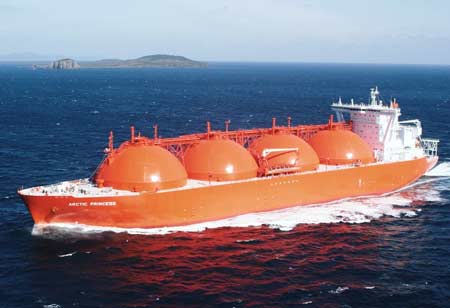THANK YOU FOR SUBSCRIBING
THANK YOU FOR SUBSCRIBING

By
Logistics Transportation Review | Thursday, May 04, 2023
Stay ahead of the industry with exclusive feature stories on the top companies, expert insights and the latest news delivered straight to your inbox. Subscribe today.
Liquids and gas transportation are crucial to the world's economy. These two types of transportation are commonly used for moving large quantities of substances from one place to another.
FREMONT, CA: Liquids and gases are essential to a modern industrialized society. They are transported from one place to another for various purposes, including energy production, manufacturing, and medical applications. Liquids and gases are transported using different modes of transportation, such as pipelines, tankers, and containers. The transportation of liquids and gases has numerous advantages, including convenience, efficiency, and cost-effectiveness.
One of the primary advantages of transporting liquids and gases is convenience. Pipelines, for instance, can transport vast amounts of liquids and gases over long distances without frequent stops or transfers. This is particularly advantageous in industries that require the continuous and uninterrupted flow of liquids and gases, such as the oil and gas industry. Pipelines are also less affected by weather conditions, meaning they can operate all year round, regardless of the weather.
Transporting liquids and gases using tankers is also convenient. Tankers are designed to transport large volumes of liquids and gases over long distances, and they can be quickly loaded and unloaded using specialized equipment. This makes them ideal for industries requiring large volumes of liquids and gases, such as the chemical industry.
Another advantage of transporting liquids and gases is efficiency. Pipelines, for instance, can transport liquids and gases at high speeds, which reduces the time required to transport them from one place to another. This also reduces the need for intermediate storage facilities, which can be expensive and require additional transportation. Transporting liquids and gases using tankers is also efficient, as they can be loaded and unloaded quickly, which reduces the time required for transportation.
Transporting liquids and gases is also cost-effective. Pipelines, for instance, are less expensive to operate and maintain compared to other modes of transportation, such as tankers and containers. This is because pipelines require less energy to operate, and they are less affected by weather conditions, requiring less maintenance. Additionally, pipelines can transport liquids and gases over long distances, which reduces the need for intermediate storage facilities, which can be expensive.
Transporting liquids and gases using tankers is also cost-effective. Tankers can transport large volumes of liquids and gases, meaning they can transport them at a lower cost per unit than other modes of transportation. Additionally, tankers can be reused, which reduces the need for new containers, which can be expensive.
Transporting liquids and gases also has environmental advantages. Pipelines, for instance, have a lower carbon footprint than other transportation modes, such as tankers and containers. This is because pipelines require less energy to operate, and they emit fewer greenhouse gases. Additionally, pipelines are less likely to spill liquids and gases than other modes of transportation, reducing the risk of environmental pollution.
Transporting liquids and gases using tankers is also environmentally friendly. Tankers can transport large volumes of liquids and gases, meaning they can transport them at a lower cost per unit than other modes of transportation. Additionally, tankers emit fewer greenhouse gases than other transportation modes, such as airplanes and trucks.
The transportation of liquids and gases has numerous advantages, including convenience, efficiency, cost-effectiveness, and environmental friendliness. Pipelines and tankers are the most commonly used modes of transportation for liquids and gases, and they offer significant advantages over other modes of transportation, such as containers and trucks. As society continues to rely on liquids and gases for energy production, manufacturing, and medical applications, the transportation of these essential resources will continue to be a crucial aspect of modern industrialized society.
I agree We use cookies on this website to enhance your user experience. By clicking any link on this page you are giving your consent for us to set cookies. More info





